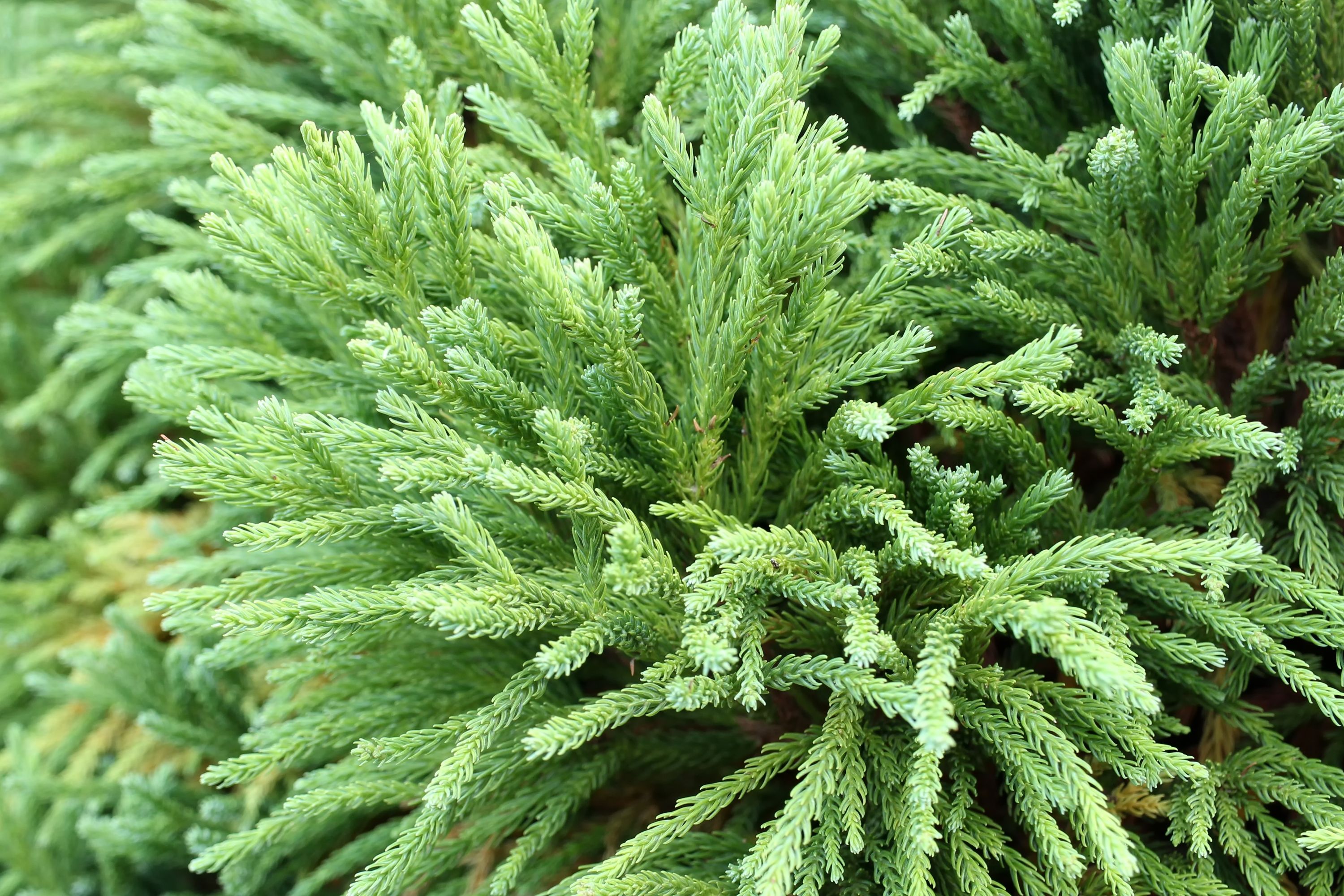Japanese Cedar
(Cryptomeria japonica)

Description
Cryptomeria japonica, commonly known as Japanese cedar or Sugi, is a species of coniferous tree native to Japan. It is one of the most iconic trees in Japanese culture and is widely planted throughout the country as a symbol of longevity and prosperity. This evergreen tree has become increasingly popular in other parts of the world as well, particularly in gardens and parks, due to its striking appearance and ease of care. Description and Characteristics Cryptomeria japonica is a large, fast-growing tree that can reach heights of up to 70 meters (230 feet) in the wild, though it typically grows to be around 50 meters (160 feet) tall in cultivation. The tree has a conical shape when young, but as it matures, it develops a more cylindrical or irregular crown. The bark of the tree is reddish-brown and peels away in thin strips. The leaves of Cryptomeria japonica are needle-like and arranged in a spiral pattern around the stem. They are typically green, but in the winter months, they may turn bronze or brown. The cones of the tree are small, round, and brown, and they can be found on the tree throughout the year. Each cone contains several seeds that are dispersed by wind. Growing Conditions Cryptomeria japonica is a relatively easy tree to grow and care for, making it a popular choice for gardeners and landscapers. The tree prefers moist, well-drained soil and full sun or partial shade. It is hardy in USDA Zones 6 to 9, which makes it suitable for many regions in North America, Europe, and Asia. Propagation Cryptomeria japonica can be propagated from seed or cuttings. Seeds should be sown in the fall or early spring, and the young seedlings should be transplanted once they have developed a strong root system. Cuttings should be taken in the summer and rooted in a mixture of peat and perlite. Uses Cryptomeria japonica has a variety of uses in Japanese culture, including as a building material, a source of essential oils, and a symbol of longevity and prosperity. The wood of the tree is highly valued for its durability and resistance to decay, and it is commonly used for construction, furniture, and decorative items. In gardens and parks, Cryptomeria japonica is often planted as a specimen tree or in groups as a windbreak or privacy screen. The tree's striking appearance and ease of care make it an excellent choice for landscapes of all sizes. Cultural Significance Cryptomeria japonica has been an important symbol in Japanese culture for centuries. It is known as the "tree of eternity" and is associated with longevity, prosperity, and peace. In Japanese gardens, it is often used to create a sense of serenity and tranquility. In the 17th century, the Tokugawa shogunate designated Cryptomeria japonica as a sacred tree and ordered that it be planted around the country to signify the unity of Japan. Today, the tree remains a national symbol of the country, and it can be found in many shrines, temples, and parks throughout Japan. Conclusion Cryptomeria japonica is a beautiful and culturally significant tree that has become increasingly popular in gardens and parks around the world. Its striking appearance, ease of care, and cultural significance make it an excellent choice for landscapes of all sizes. Whether planted as a specimen tree or used in groups as a windbreak or privacy screen, Cryptomeria japonica is sure to add a touch of elegance and serenity to any setting.
Taxonomic tree:







